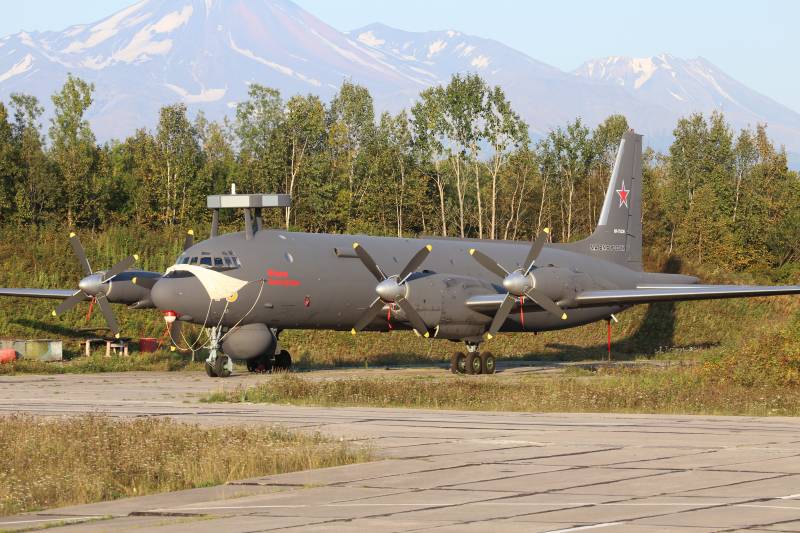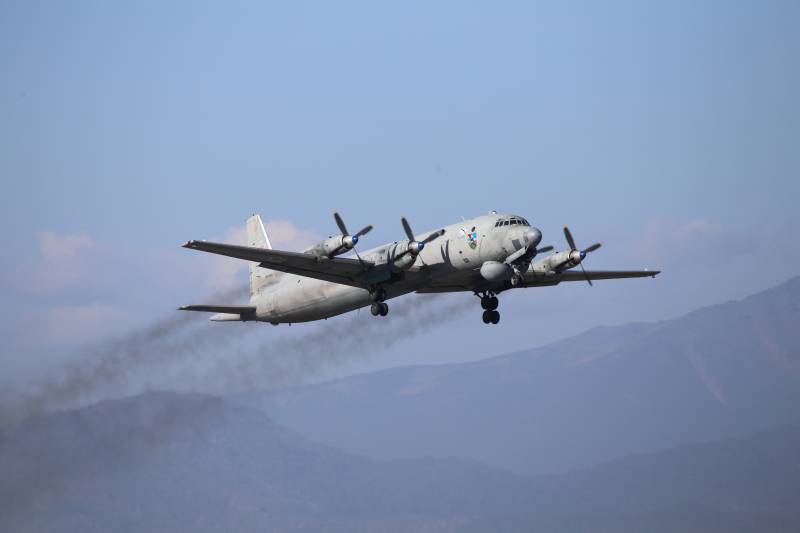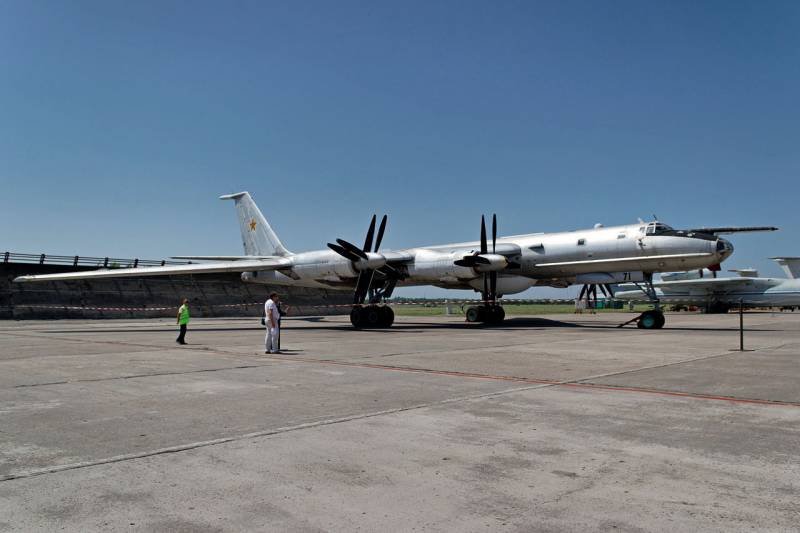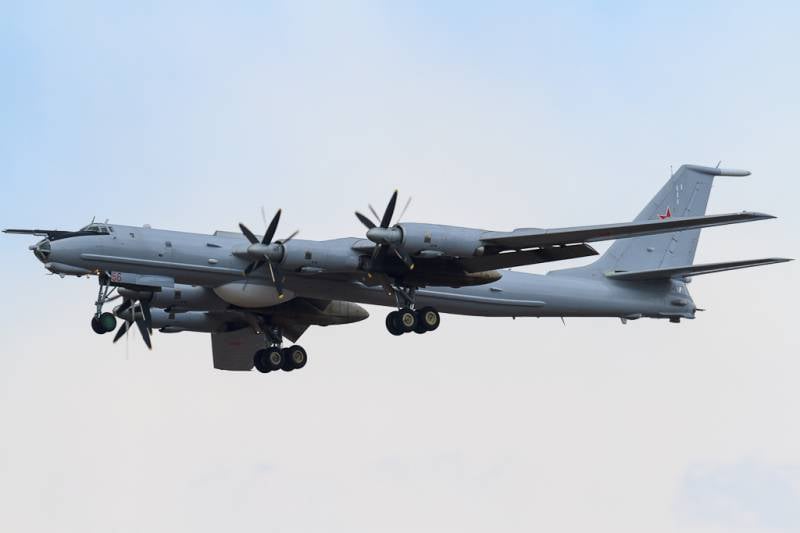The present and future of Russian anti-submarine aircraft
According to known data, at present the Russian Navy has several subdivisions in service of which anti-submarine aircraft of a number of types are made up. Thus, the directory The Military Balance from the organization International Institute for Strategic Studies over the past year indicates the existence of three squadrons manned by IL-38. Two more squadrons are operating Tu-142 type vehicles. Also, one of the divisions continues to operate several anti-submarine amphibious aircraft model Be-12.
The same handbook gave the following data on the number of Russian anti-submarine aircraft. It was indicated that the X-NUMX of the Il-16 and the 38 aircraft of the modernized Il-6H served in the fleet. The number of aircraft of the Tu-38 family of various modifications was determined in 142 units. The presence of three Be-22 is also mentioned. In total, according to foreign estimates, at the beginning of last year, Russian anti-submarine aviation had less than fifty aircraft with special equipment and weapons. It should be noted that data from domestic sources indicate a greater number of aircraft - at least 12 units.
Novel about IL-38
According to other sources, the Russian fleet has a large number of IL-38 aircraft. Until recently, maritime aviation had about 50-55 of such machines in the base configuration. A significant part of these machines continues to serve, but a certain proportion of the aircraft has undergone modernization and now shows higher performance, and also has a higher potential in the context of solving combat missions.
It should be noted that the development of the IL-38 aircraft modernization project started back in the eighties of the last century. As part of the project with the cipher "Novella", some works were performed, but soon the new anti-submarine complex was left without a future. Due to economic problems, the Russian fleet could not order the construction of new aircraft or the modernization of existing equipment for a promising project.
However, another customer was soon found. The modernization of the IL-38 interested in the Indian Navy. A contract was signed, according to which six Indian aircraft were upgraded to the IL-38SD version (Sea Dragon - the name of the updated on-board equipment).
Only at the end of the two thousandths did the Russian military leadership become interested in the new modernization project for anti-submarine aircraft. The result was the appearance of an order for the serial modernization of existing aircraft to the state of IL-38H ("Novella"). By the year 2015, we were able to repair and upgrade the 5 of the existing machines, and the work continues. Upgraded aircraft are delivered annually.
Earlier it was claimed that in the framework of the existing order, by the end of the decade, naval aviation would have to receive 28 upgraded IL-38Н. In recent years, plans have been changed. Now it is assumed that there will be about 30 of existing aircraft, however, work on such an order will last until 2025 of the year. Anyway, in the foreseeable future a significant proportion of Il-38 in service will undergo repairs with the restoration of technical readiness, as well as receive new equipment.
The essence of the modernization of IL-38 aircraft under the project with the letter “H” consists in replacing the search and sighting system “Bercut-38” with the new system “Novela-P-38”. The structure of the latter includes only modern components, which leads to understandable results. According to the developers of the IL-38H project, the new search and sighting system allows four times to increase the performance of the aircraft when searching for submarines. In addition, the main characteristics of the onboard equipment that affect the solution of basic tasks are enhanced.
A characteristic feature of the Il-38H is the preservation of anti-submarine capabilities when other functions appear or are improved. Thus, the presence of a radar with a phased antenna array allows you to search and accompany surface or air targets. Large surface ships can be seen at a distance of up to 320 km, airplanes - up to 90 km. Automation is capable of tracking up to 32 targets simultaneously. It should be noted that the radar complex "Novella P-38" is the most notable innovation of the upgraded aircraft. Its antennas are placed in a polygonal housing located on the roof of the fuselage.
After modernization, the aircraft retains the possibility of using sonar buoys of various classes and types. Depending on the task, the IL-38H is capable of carrying various torpedoes and anti-submarine bombs, both free-falling and adjustable. The total mass of the combat load is up to 5 tons.
The IL-38 modernization program continues and is bearing fruit. So, in July last year, the Chief of Naval Aviation of the Russian Navy, Major General Igor Kozhin, said that by that time 60% of the existing Il-38 fleet had passed the process of deep modernization.
Anti-submarine "Bears"
An important element of anti-submarine aviation of the Navy of Russia are airplanes of various modifications of the Tu-142 family. In operation, less than three dozen cars of modifications Tu-142МР and Tu-142М3 remain. Aircraft of these types are equipped with a significant amount of special equipment used in the search for submarines. For these purposes, airborne devices and sonar buoys are used. A characteristic feature of the Tu-142MR aircraft, capable of communicating with its submarines, is a super-long-wave radio station with a cable antenna of length 8600 m.
In the spring of 2015, it was announced that the Ministry of Defense was intent on repairing and modernizing the existing Tu-142 aircraft. It was reported that the new modernization project will have to affect mainly onboard electronic equipment. It was planned to replace the search and sighting system, modify navigation equipment and install new weapons control devices.
According to reports from the recent past, the airplanes of both modifications, which remain in operation, had to be upgraded. The updated technique was suggested to be marked with an additional letter “M” in the title. Thus, after upgrading the Tu-142MR aircraft were to be called Tu-142МРМ, and Tu-142М3 were turned into Tu-142М3М.
In the middle of 2016, some details of the Tu-142МРМ project became known. Thus, in accordance with the order of the command of the Navy, the upgraded aircraft had to retain the ability to communicate with the submarines, as well as get new functions. With the help of advanced equipment, it was proposed to ensure the possibility of transferring data to the ballistic missiles of the Bulava submarines, as well as to products of the Caliber family. First of all, these functions were planned to be used for issuing target designation to a flying rocket.
It was planned to spend about 4-5 years to carry out work on the repair and upgrading of existing equipment. In this case, it was about the modernization of the entire fleet. Thus, by the beginning of the next decade, about Tu-30 aircraft with extended life and new equipment could have been operated by naval aviation. The development of the modernization project was entrusted to several enterprises of the Russian aviation industry. Works with equipment were assigned to the TANTK them. Gm Beriev.
Anti-submarine aircraft of the future
In the middle of last year, Major-General I. Kozhin, Chief of Naval Aviation of the Fleet, spoke about the plans of the military department for the development of anti-submarine aircraft groups. According to existing plans, in the future the fleet will have to receive not only upgraded vehicles, but also new types of equipment. Moreover, the development of a promising anti-submarine patrol aircraft has already begun.
Earlier it was claimed that the command of the Navy wants to get not just a plane with anti-submarine equipment and weapons, but a unified platform. On the basis of such a universal aircraft, it will be possible to build machines of one purpose or another with a certain specialization. The emergence of such a multi-purpose aircraft will allow the replacement of all existing technology of several types. According to General Kozhin, in many matters, a promising domestic aircraft will be superior to foreign equipment of its class.
It is curious that as early as July 2017, I. Kozhin spoke not only about the very fact of the development of a new project. The chief of naval aviation also noted that work on the creation of the next generation patrol aircraft was already nearing completion. However, no technical features of such a project, of particular interest to specialists and the public, were specified.
The last time the development of a promising anti-submarine patrol aircraft was mentioned by official sources a few weeks ago. Not long ago, the United Aircraft Corporation released the next issue of the corporate magazine Horizons. It was published a new article "Snoops" submarines "on the current work on the renewal of the IL-38 and the further development of anti-submarine aircraft.
In the context of updating the fleet of vehicles, the magazine again quoted the statements of Major General I. Kozhin, made back in July last year. Quoting the commander, the publication Horizon did not provide any new information about the project under development. It reminded of the desire of the command to create a unified platform and the expected completion of the design work. New information, as well as technical details of the project have not been published. However, only a reminder of a promising aircraft caused a certain revival in the relevant circles.
The timeframes for the completion of development work and the start of deliveries of new-type production aircraft have not yet been specified. If in the middle of last year, the aviation industry really completed the development of a new project, the first prototype of a promising model could take to the air within the next few years - including by the end of the decade. On the tests and refinement of the project will take several years, after which it will be possible to start mass production.
A patrol aircraft of a new type will be able to go into the series not earlier than the mid-twenties. It is noteworthy that it is precisely at this time that it is supposed to complete the update of the majority of the available IL-38. Thus, for a certain time, the prospective machine and the new IL-38Н will serve together. The replacement of the IL-38Н and the upgraded Tu-142 will take place only in the distant future.
It’s too early to speak about the number of anti-submarine patrol aircraft required. At the moment, naval aviation, according to domestic data, has at least 80-85 similar machines of several modifications. For their full replacement, mass batch production of new equipment will be needed, possibly in comparable quantities. So far it remains to be wondered by what time the aviation industry will be able to transfer such a number of aircraft to the armed forces.
Dark past and bright future
Just a few years ago, the current state of the antisubmarine aviation of the Russian Navy caused fair concerns. The basis of the grouping of such equipment was the IL-38 machines, equipped with the outdated search and sighting system "Bercut-38". Modernization, planned in the eighties, was not carried out in a timely manner, which markedly worsened the potential of anti-submarine defense in general. The situation with the Tu-142 aircraft deteriorated mainly due to the gradual reduction in the number of such machines.
Fortunately, the Ministry of Defense was able to find opportunities and resources for updating the most important component of the Navy. A move was made to the project "Novella", which provided for a deep modernization of the existing IL-38. A little later, the development of renovation projects for the Tu-142 family began. Finally, the development of a new aircraft is underway, which will have to be first supplemented and then replaced with existing machines.
Currently, there is a gradual modernization of the fleet of anti-submarine aircraft, carried out through the repair and updating of available equipment. This approach will be used at least until the mid-twenties. Later construction of completely new cars will begin. It cannot be ruled out that for some time the construction of new ones and the upgrading of existing aircraft will go on in parallel. Then all the efforts of the industry will be focused only on the construction of advanced equipment.
The events of recent years and plans for the near future vividly show the attitude of the command to the development of anti-submarine aviation. A number of important projects have already been launched, and a list of further works has been defined. Thus, every year the potential of the Russian group of anti-submarine aircraft will grow. After a long period of dubious prospects, a bright future opens up before this component of naval aviation.
Based on:
http://uacrussia.ru/
http://ria.ru/
http://tass.ru/
https://tvzvezda.ru/
http://armstrade.org/
"Snoops" of submarines // Horizons. United Aircraft Corporation, 2017. No.4.




Information